HLW Celebrates DIY and Achieves 78% Carbon Reduction for Kingfisher’s HQ
HLW, a full-service design firm known for its innovative and client-centric design solutions, has recently completed a significant project for home improvement giant Kingfisher at its new London headquarters. With a history dating back to 1885, HLW has consistently demonstrated a commitment to integrating sustainability and wellness into their design philosophy, serving a diverse range of clients from Alexander Graham Bell to Google.
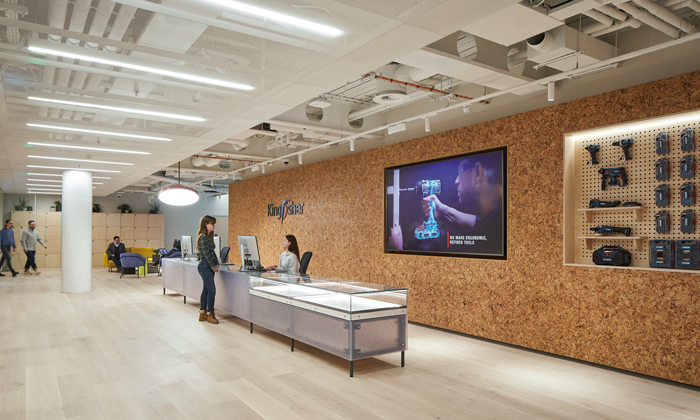
Kingfisher, the parent company of well-known brands such as B&Q and Screwfix, sought HLW’s expertise to design their new 25,000 sqft office located in the iconic Renzo Piano’s Paddington Square building. The project’s primary goal was to embody Kingfisher’s Environmental, Social, and Governance (ESG) commitments, focusing on substantial carbon reduction and fostering a space that promotes flexibility and reuse.
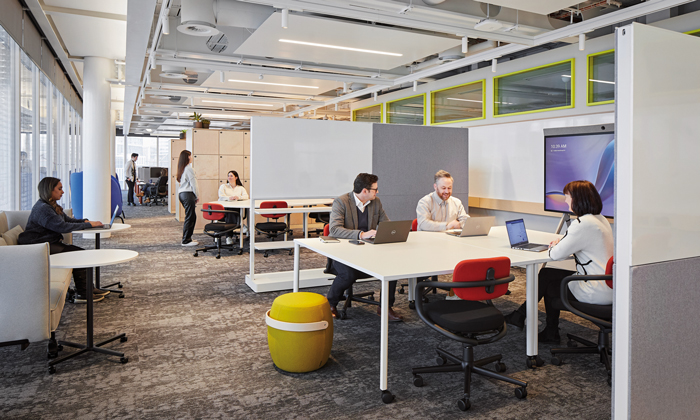
HLW’s design approach for Kingfisher’s HQ not only aimed to significantly reduce embodied carbon but also to create a dynamic and adaptable workplace environment. The design celebrates the essence of DIY, showcasing the construction and assembly of objects, aligning with Kingfisher’s brand identity. This initiative resulted in a 78% carbon reduction, setting a new benchmark in sustainable corporate interiors. HLW and Kingfisher collaborated closely to craft a space that is not just a place to work but an ‘honest’ destination, offering an activity-based working environment where the workforce can thrive in a setting that is as versatile as it is inviting.
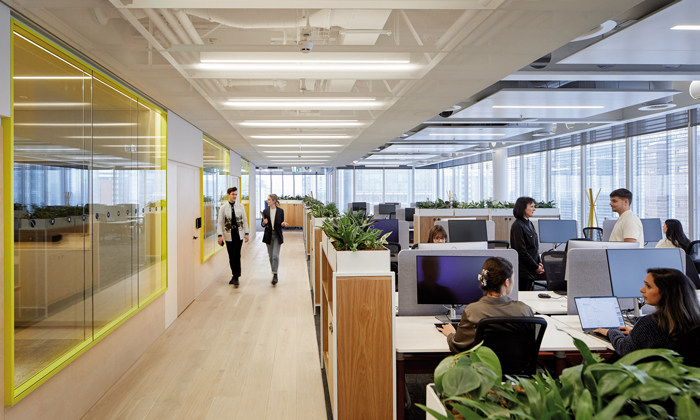
Jonce Walker, Principal at HLW and Global Director of BEYOND, commented:
“Our relentless pursuit of decarbonisation really took center stage with this project and it was refreshing to leverage Kingfisher’s ESG goals to help design their new home. The remarkable achievement of a 78% reduction in embodied carbon from a baseline was achieved through a close-knit collaboration between BEYOND and HLW design team with the support of Kingfisher’s leadership team.”
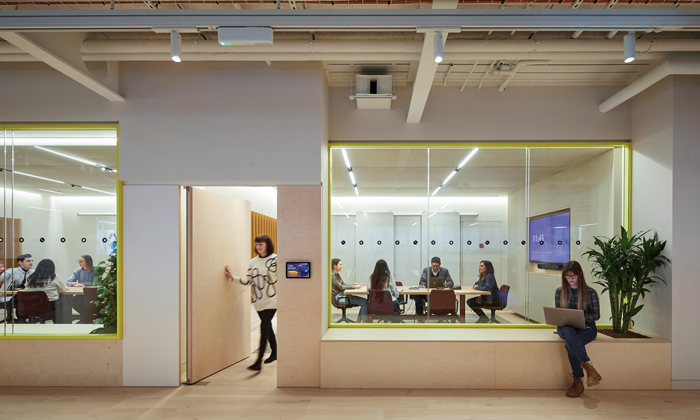
A central service core opens onto a semi-open plan office space, where a mix of enclosed and semi-enclosed adaptable spaces form an internal layer of the office to promote team meetings and collaboration. A wide variety of character areas are distributed throughout, from large townhall spaces to high-performing focus spaces for individuals, and everything in-between.
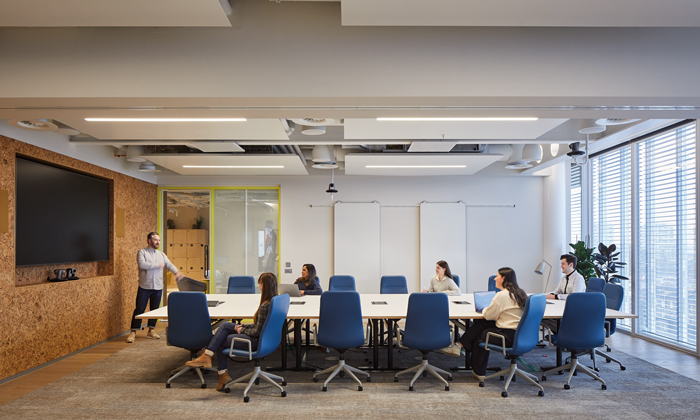
The outer perimeter maximises access to natural light and features a flexible workspace, with a variety of settings, that can be adapted to suit users’ needs. Subtle sensors have been integrated into all spaces to assess usage and several future-proofing scenarios were tested to understand how these spaces could evolve over time, resulting in ‘fixed anchors’ combined with movable and demountable elements, and an adaptable infrastructure, for maximum adaptability.
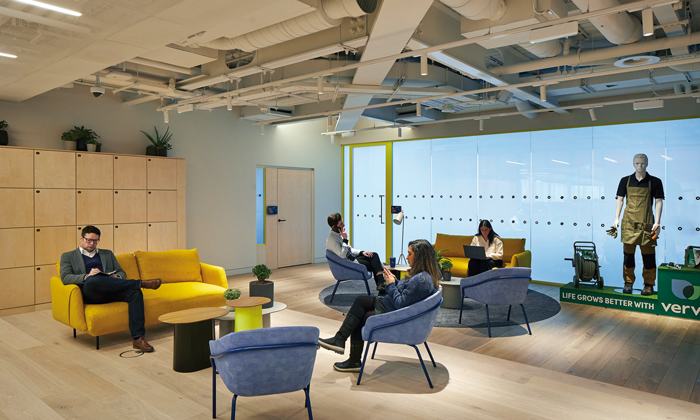
A primary objective of the new Kingfisher office was decarbonisation, specifically reducing embodied carbon emissions from the interior fit-out through careful consideration of: raw material extraction, manufacturing and processing, transportation, installation of all building materials, replacement of materials, end of life, disposal and recycling.
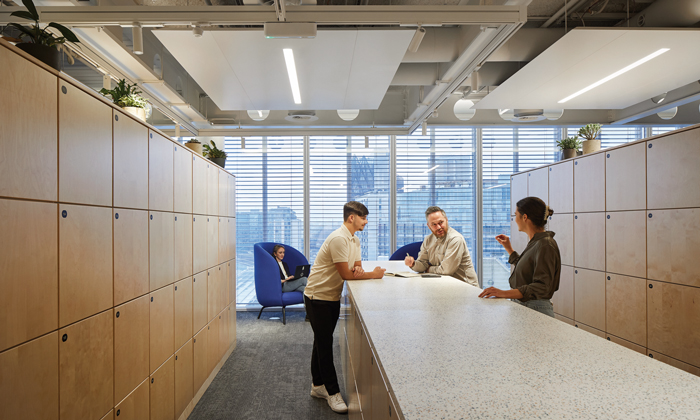
Kathryn Thomas, Head of Responsible Business, Kingfisher plc.
“As an organisation with ambitious carbon reduction targets, it was important that our office space honoured our commitments and took into careful consideration the environmental impact of the build at all stages of the process. We’re proud of the reduction in embodied carbon achieved and the decisions taken to get there, from the raw materials sourced to the furniture chosen, which all positively add to the experience of being in the space.”

To achieve a 78% reduction from a baseline in embodied carbon, HLW worked with BEYOND – its in-house sustainability consultancy – to carefully examine every partition, ceiling system, carpet, and all other materials in the building, and measure its carbon footprint to ensure the most sustainable option was utilised in every case.
The adjustments adopted to achieve this impressive reduction include walls clad in FSC plywood to absorb CO2, reconditioned raised floors and locally sourced or recycled furniture. In line with HLW’s recently launched Healthy Material Protocol, the furniture specification process was dictated by a questionnaire that each supplier had to complete, specifying the recycled content and environmental certifications of their products amongst other requirements.
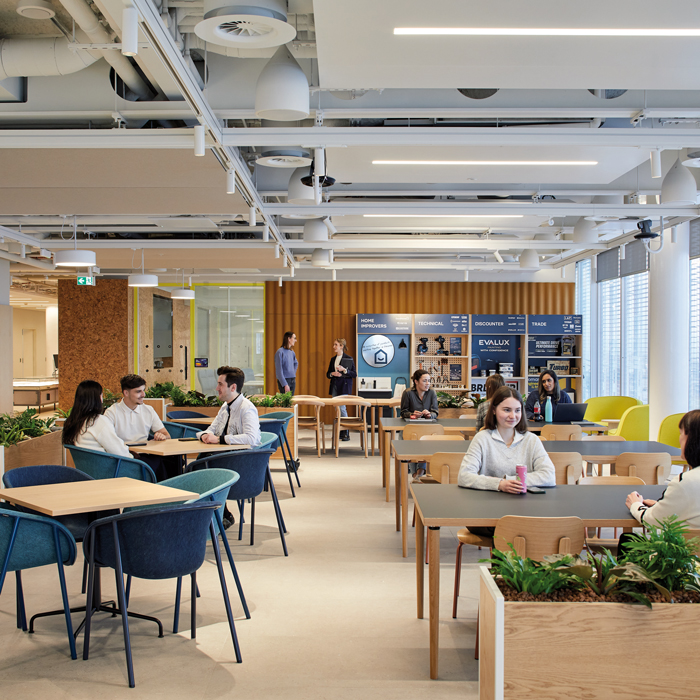
The design language celebrates honest physical expression of how sustainable and durable components are put together, with joyful colours framing activity. The fine balance of natural and man-made materials creates a strong, tactile, timeless and ‘domestic industrial’ backdrop, with internal partitions featuring light timber and cork that contrast with corrugated steel to create a soft industrial aesthetic. The fine balance of natural and man-made materials creates a strong, tactile and timeless backdrop, with brand experiences showcased via flexible modular display systems akin to retail environments, from physical products to interactive digital content.




